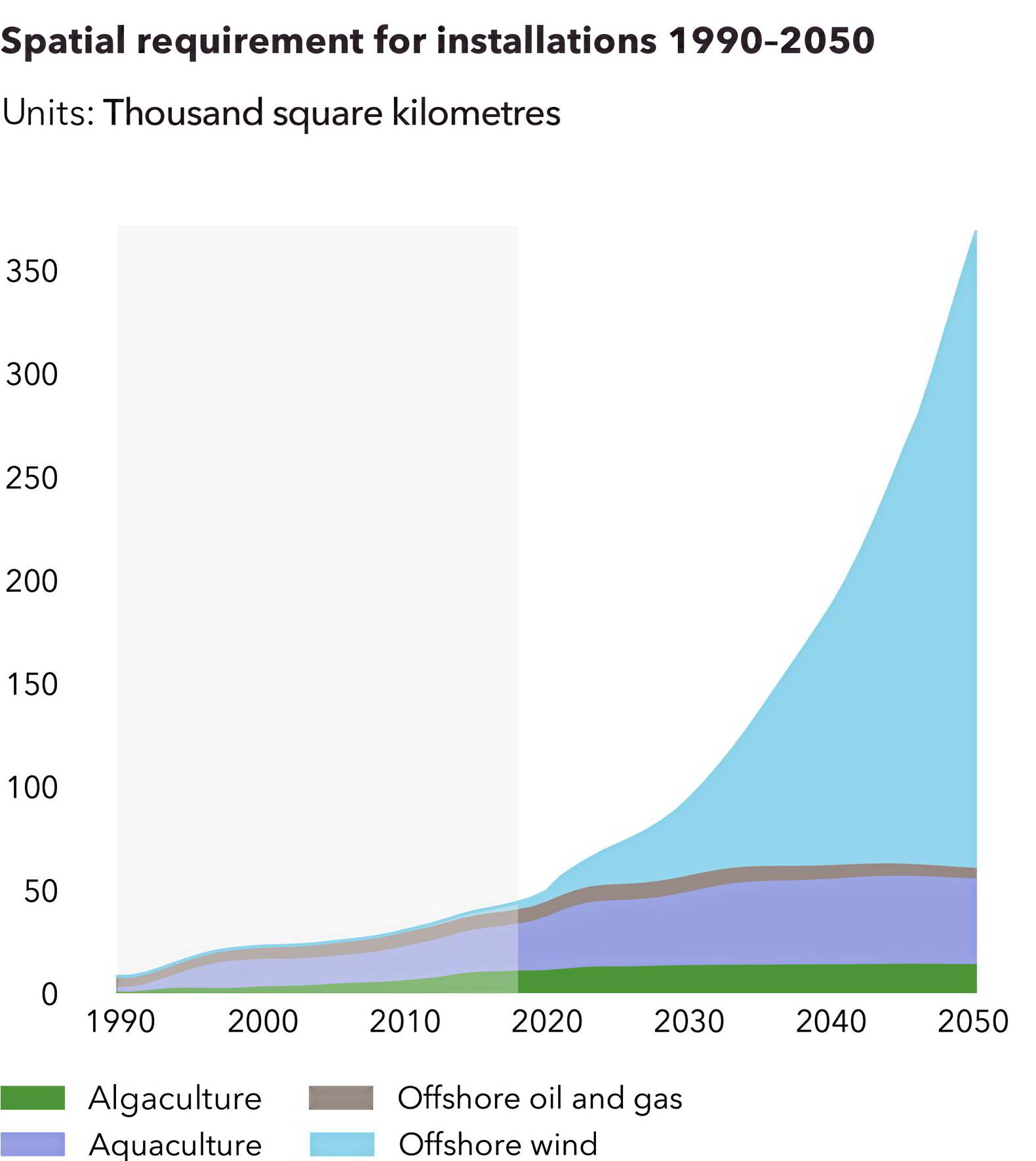“Exponential” global offshore wind growth will by 2050 trigger a race to grab ocean space equivalent to the landmass of Italy as the renewable source displaces oil & gas as the main target for investment in the ‘blue economy’, predicts a study by DNV.
Offshore wind will by mid-century account for half of total capital investments in the blue economy – a term used to cover sea-based sectors as diverse as energy, aquaculture, shipping and tourism – amid a shift away from fossil-rich regions to new centres of renewable production, said the global consultancy group.
In practice that means a greater focus on Asia, North America and the Indian subcontinent, according to DNV’s Ocean Future to 2050 report – with the last of those set to see a 50-fold increase in demand for ocean space.
DNV forecasts global demand for 368,000 sq km to be used for energy and food production infrastructure by mid-century, up from 40,000 sq km in 2018 – the vast majority for offshore wind. The marine spatial planning involved in finding the additional sea-space is set to be a “tremendous challenge” in some regions, it added.
DNV CEO Remi Eriksen said: “The blue economy is entering a period of sectoral and geographic diversification.

"Currently, the regions which benefit most from the ocean in economic terms are those with access to oil and gas fields off their coastlines. But as the world decarbonises and the need for renewable energy grows, countries not able to be part of the age of fossil fuel can be part of the age of wind.”
Offshore oil & gas is set for a steep decline from its current position of accounting for 80% of blue economy capex, DNV reckons – but will still make up 25% of investments in 2050.
The fossil fuel investment plunge means overall capex directed to the ocean economy will actually be lower than today’s figure, the report claims.
DNV's report comes amid gathering momentum behind an offshore wind-led energy transition around the world, whether through increased forecasts for build-out off China, the repurposing of North Sea oil & gas facilities for floating wind, or signs that the long-awaited debut of wind at sea off India is moving closer.
DNV in its latest Energy Transition Outlook expects offshore wind to balloon to a global fleet of 1.7TW, with floating projects accounting for 264GW.


